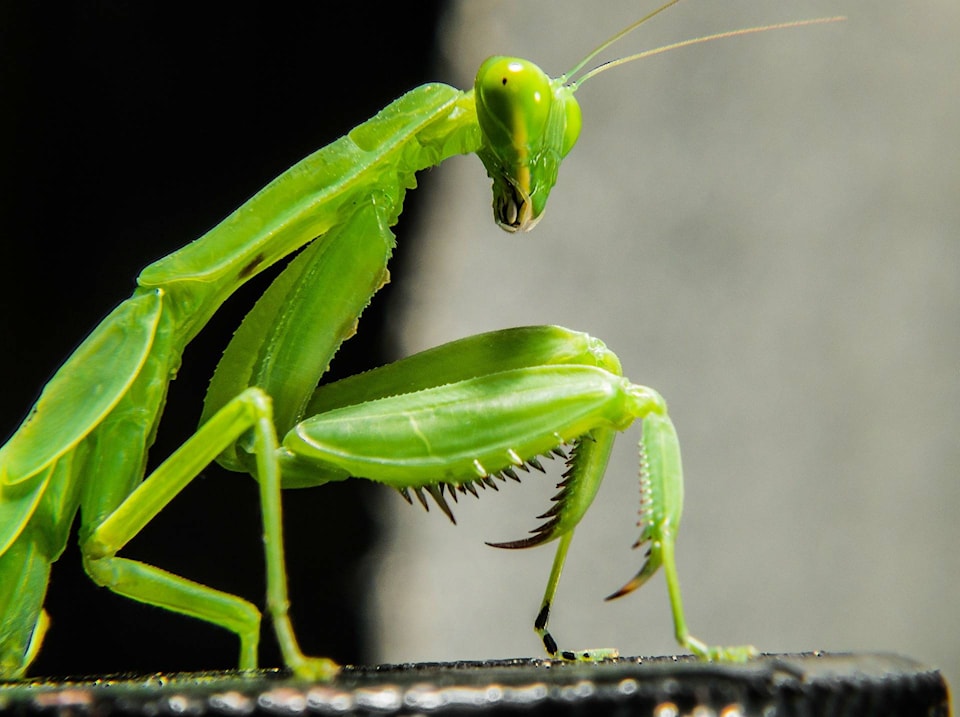By Ed McMackin, a biologist by training and a naturalist by nature
Praying mantises are one of those groups of insects that survive the winter in the egg stage rather than as larvae, pupae, or adults. The eggs are laid by the adult female in late summer, not separately, but in a mass of 50 to 75 eggs.
Some moths and butterflies lay their eggs in a clump or in rings around a twig. The difference with praying mantises is that the eggs are laid in a mass with layers of a Styrofoam-like substance that hardens when exposed to the air. It is tan or light brown in color and feels spongy. The egg cases can be found in spring attached to buildings, on old boards, in low grass, or on twigs.
I recall once having an egg cluster hatch a number of these tiny praying mantises. They slowly walked about exploring their new surroundings. It was amazing that despite being so small, they had perfectly functioning leg joints and necks, permitting them to look from side-to-side. A mantis is supposedly the only insect that can look over its shoulder. They can move amazingly fast and are almost impossible to spot when they fly away to land in a bush or tree.
Praying mantis young hatch out in the spring, not as larvae or caterpillars as with many insects, but as miniature praying mantises. They are about 5 millimetres in length and appear to be exact replicas of the adults, minus the wings. They hold their front, prey-grasping legs up as if in a praying position. They are actually holding them that way to be ready to grasp some hapless prey. They are very vulnerable, when they are young, to being prey themselves. It is common knowledge that the female will often eat the male after mating.
Praying mantises have only become frequently observed in the last 50 years. Some think they came from the Okanagan Valley, but more likely, they migrated from the south, not hampered by mountain ranges of unfavorable habitat. Or perhaps, praying mantis pets escaped or were released. Other creatures like white-tailed deer, wild turkeys and racoons also migrated from the south. Perhaps some of the “Saskatchewan Bluejays” came that way also.
READ MORE: Out There: Flowers Around the World
